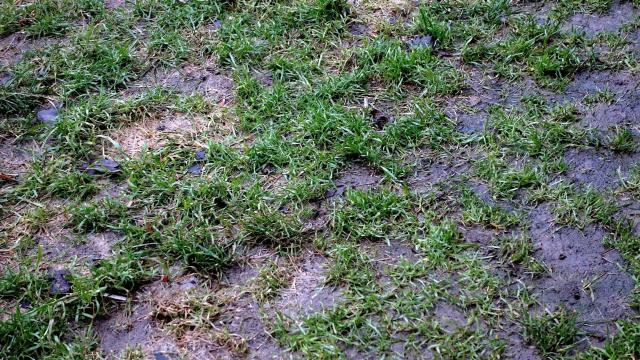Standing water that remains on your lawn well after a rainstorm not only limits how you use your yard; it also creates a breeding ground for insects, mould, and algae, attracts rodents, and may kill your grass.
There are a few possible explanations for why water is pooling on your lawn, all of which come back to poor drainage. If you find puddles in specific places, you may have flat or low spots that would benefit from a French drain that collects and redirects water away from standing pools along a slope. If you have a lot of rain runoff in one area, you could use that moisture to your advantage by planting a rain garden.
But if your whole lawn is waterlogged, you may be dealing with compacted ground that simply can’t absorb the amount of moisture it receives. This can be the case if your lawn gets a lot of foot traffic, has a buildup of grass and debris, or has a high clay content in the soil (or all of the above). Here’s the best way to fix it.
How to troubleshoot a waterlogged lawn
Unfortunately, you have to wait for the sun to come out and your lawn to dry between storms before you can work on it. Moist soil is fine — squishy mud is not. Try to avoid walking on it in the meantime. If you have puddles that persist, Bob Vila recommends sweeping them away with a broom.
There are two main issues that could be preventing your lawn from absorbing water, and each requires a different solution. One is an excess layer of dead grass and debris (called thatch) that prevents water and air from getting to the soil below. If you can’t see dirt underneath your grass, or if you need to dig up more than 1/2 inch of thatch to reach the soil beneath, dethatching is probably your best bet.
If thatch buildup isn’t the problem, you may have compacted soil, which doesn’t allow air and water to soak in, causing it to pool on the surface. Soil compaction can be a product of overuse and/or the soil composition itself. In this case, you’ll likely need to aerate and top-dress your lawn to loosen the soil and improve its drainage.
How to dethatch your lawn
The simplest (and cheapest) way to dethatch is with a rake that has short tines and curved blades. Rake vigorously to break up the matted material, but take care not to pull up grass and roots. This takes some effort but works well for small lawns. You can also rent a power rake — similar to a mower — if you have a large yard.
Note that your lawn may look a little rough after you dethatch. Late winter is an ideal time for this process, but it can be done anytime if it’s causing drainage problems.
How to aerate and top-dress your lawn
If compaction is your issue and aeration the solution, you can certainly hire a professional lawn care service to do it for you. Aerating essentially pokes holes in your soil to increase drainage.
If you prefer to DIY, wait until your lawn is damp but not soaked, and rent a hollow-tined aerator from your local hardware store. As you roll the machine over your grass, the tines will push into the soil. Make several laps to ensure you cover the whole surface, and leave what’s dug up to be reabsorbed into your yard. You should aerate once a year or every two years, ideally in spring or fall.
To further improve your soil, which may be low in organic matter due to compaction, add a layer of compost (or compost mixed 1:1 with horticultural sand) to your lawn after you aerate. You could also overseed areas with poor grass coverage to improve the root structure.

Leave a Reply
You must be logged in to post a comment.